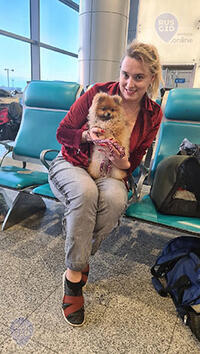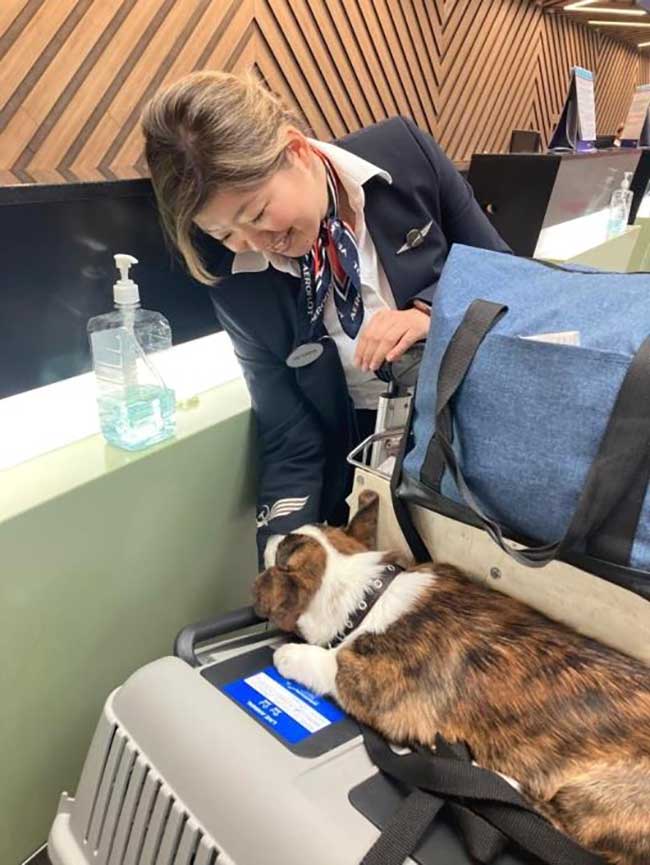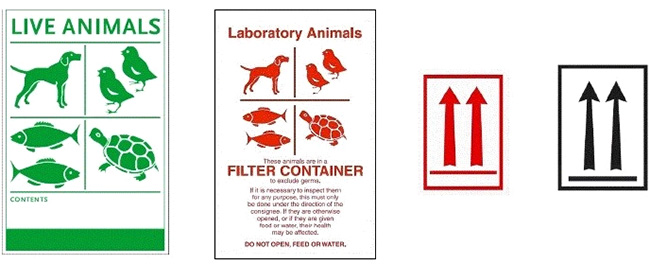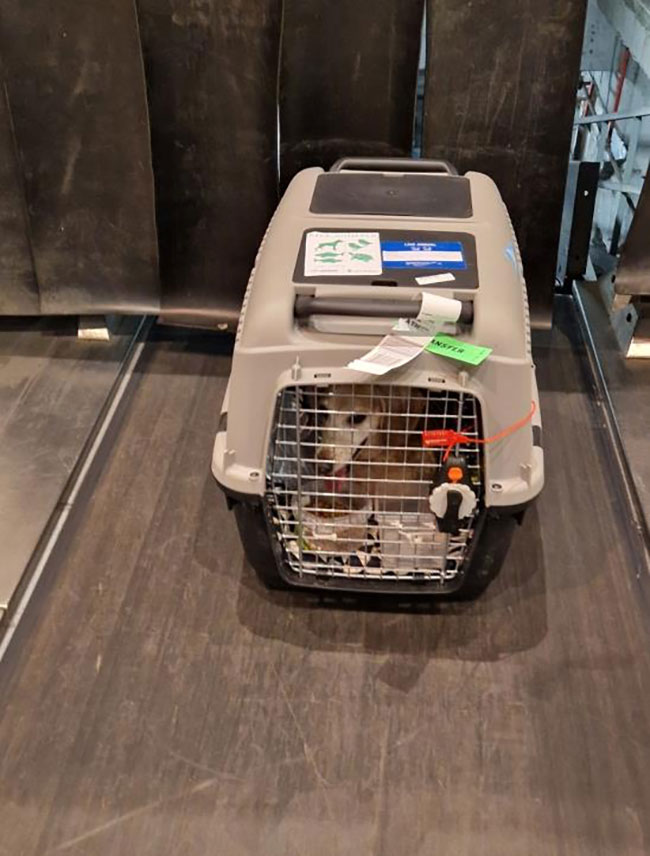By Natalia Spitsyna, International animal transport specialist.
Among all cargoes that are transported by air, there is a special category of cargoes that causes a lot of questions during registration, and also puts airlines and their employees in a state of shock. This category of special cargo is “live animals”.
“Live animals” are transported quite often for scientific purposes, as well as personal animals of people who fly and for one reason or another take their favorite kitty or dog with them. They are also animals exchanged between laboratories, which participate in various experiments. All these animals belong to the category of special cargo and require special regulations for loading, transportation and unloading at airports, as well as all those involved in the handling of this cargo need certain knowledge for the transportation of this cargo.
What makes these types of cargo particularly specific is the fact that they are living beings and our “brothers-in-law”. If there is any emergency situation when the cargo goes to another point, it should be taken into account that this category of cargo can suffer without: proper attention, attitude, care and heating of the airplane. In simple terms, our favorite animal can die.
Let’s dwell on some of the points that cause a certain complexity when working with cargoes of the category “live animals”.
The preparation phase comes when all the planning has been done and the shipment is ready for departure.
By the time of acceptance, both the shipper and the airline have done their jobs. Now it’s a matter of checking to see if everything has been done correctly. The use of an “acceptance checklist” is essential to make sure that everything has been done and done correctly. Some airlines have their own “checklist”, IATA LAR provides an example of its “checklist” and CITES also provides a “checklist” for listed animals in various CITES publications. It is mandatory that all questions must be answered in the affirmative.
It is necessary to plan in advance the time to carry out all formalities when the animal arrives at the airport of destination, but the inspection process itself should not take too long: it should be remembered that the animal has been and is under stress from the journey and needs a familiar environment. Facilities should also be prepared before the animal is delivered to the airport of departure, loaded into containers and loaded onto the airplane. It is the responsibility of the shipper to provide food, water and sufficient absorbent material for the entire duration of the animal’s journey.
All necessary documentation and certificates must be attached to the air waybill. The consignor’s certificate is prepared in two copies: one copy remains at the station of departure; the other copy accompanies the animal during the entire journey. The sender is responsible for providing all necessary documentation, including the Certificate of Consignment, which is the most important document for the airline.
The container must meet IATA LAR requirements and the type of animal. It is the responsibility of the airline personnel to verify the construction of the container, its suitability for the type of animal, prior to accepting the animal.
It is recommended that the container in which the animal will be transported be delivered to the airport well in advance so that it can be inspected and/or any necessary changes can be made prior to the arrival of the animal. The container must be properly labeled with a “Live Animals” sign and a sign with orientation arrows. Other special markings must also be applied to the appropriate area of the container.
The sender’s address and the consignee’s address, their telephone numbers, the 24-hour contact number of the person in charge of transportation who has the necessary information regarding the animal in case of emergency, must be attached to the container and a copy must be attached to the documentation.

Figure 1 – Check-in and inspection of documents and container by airline representative
Inspection of the animal itself by airline personnel is encouraged: it should be active, free of signs of injury and in good health. It is not necessary for airline staff to visually assess the animal’s condition when carrying out a veterinary check, but in other cases it is not advisable to send an animal that looks sick without further consultation with a veterinarian.
It is quite common to see that an excessive amount of sedatives have been administered to especially pets: flying can be dangerous for such animals in a depressed state.
Food and water bowls should be attached to the container, although they may not be used: their use is possible in case of flight delays. Their attachment to the container varies and depends on the design of the container itself. Some animals eat from the floor, in which case a food bowl is not necessary. A water bowl, on the other hand, is mandatory even for a short international flight because of possible delays due to technical failure of the airplane or other reasons.
The required food must be provided by the sender and either attached to the container or placed wherever the sender specifies. The sender’s instructions for the animal’s nutrition must be strictly followed, as the requirements may be completely different depending on the type of animal.
These instructions are attached to the container and also attached to the documentation.
Any special instructions should also be attached to the documentation. For example, in the case of birds of prey, only a specialist for these birds should conduct the feeding and a veterinary inspection should be conducted in his presence. Although the LAR regulations provide information on feeding of animals in the container requirements section, it is necessary to ask the consignor for the exact requirements for the type of animal to be transported.
Mandatory container labelling:
- full name and address of the consignor;
- full name and address of the consignee;
- 24-hour emergency telephone number with all codes – country, area, city;
- the common and scientific name of the animal and the number of animals as shown on the Shipper’s Certificate;
- in case of transportation of poisonous animals, the inscription (POISONOUS);
- in case of transportation of aggressive animals, the inscription (THIS ANIMAL BITES); (” special instructions on feeding and watering (attached to the container).
The English language is used for marking (text) and signs. The aviation authorities of individual countries may require translation into the language of the country of shipment and the country of destination.
 Figure 2- Signs and markings on the animal container
Figure 2- Signs and markings on the animal container
The “Live Animals” sign (green color on a light background) is applied to at least one side of the container. Some container requirements specify the need for the “Live Animals” sign on two opposite or four sides. The sign shall indicate the name of the animals and the number of animals in accordance with the Shipper’s Certificate. The use of the “Laboratory Animals” sign is strictly prohibited.
The “Orientation Arrows” sign (red on white or black on white – no difference) shall be applied on at least two opposite sides (see also the instructions in the container requirements).
The “Laboratory Animals” sign (bright red on a light background) is only used for laboratory animals in special containers where the ventilation openings are covered by filters. Additional use of the “Live Animals” sign (green color) is possible.
It is strictly forbidden to block the ventilation openings of the container when applying the signs.

Figure 3 – Dispatch of a container with an animal at the international terminal of Yerevan Airport
These are only minor nuances when dealing with the “live animals” category. Not only the delivery and speed of delivery, but also the condition of our pets and the fact that the animals reach the final destination without stress depends on the level of qualification and training of the staff of a particular airport. Their flight should not affect their psychosomatic state.
Author:
Natalia Igorevna Spitsyna, specialist in international transportation of animals
- SEO Powered Content & PR Distribution. Get Amplified Today.
- PlatoData.Network Vertical Generative Ai. Empower Yourself. Access Here.
- PlatoAiStream. Web3 Intelligence. Knowledge Amplified. Access Here.
- PlatoESG. Carbon, CleanTech, Energy, Environment, Solar, Waste Management. Access Here.
- PlatoHealth. Biotech and Clinical Trials Intelligence. Access Here.
- Source: https://www.logisticsit.com/articles/2024/03/08/problems-of-correct-labelling-and-shipment-of-live-animals-cargo-and-specifics-of-work-with-this-cargo



